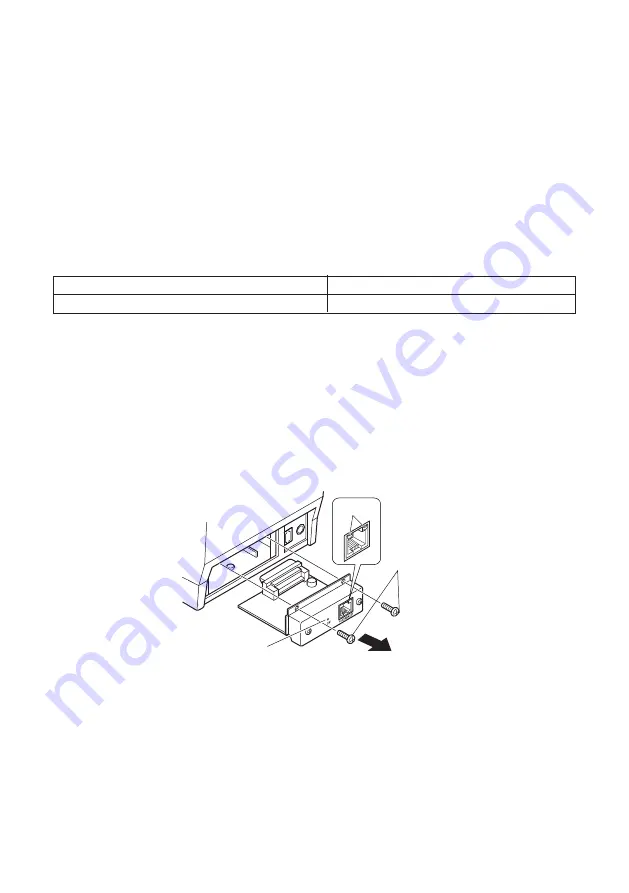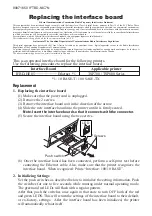
Replacing the interface board
Federal Communications Commission Radio Frequency Interference Statement
This equipment has been tested and found to comply with the limits for a Class A digital device, pursuant to Part 15 of the FCC Rules. These
limits are designed to provide reasonable protection against harmful interference when the equipment is operated in a commercial environment.
This equipment generates, uses and can radiate radio frequency energy and, if not installed and used in accordance with the instruction manual,
may cause harmful interference to radio communications. Operation of this equipment in a residential area is likely to cause harmful interference
in which case the user will be required to correct the interference at his own expense.
For compliance with the Federal Noise Interference Standard, this equipment requires a shielded cable.
This statement will be applied only for the printers marketed in U.S.A.
Statement of The Canadian Department of Communications Radio Interference Regulations
This digital apparatus does not exceed the Class A limits for radio noise emissions from digital apparatus set out in the Radio Interference
Regulations of the Canadian Department of Communications.
Le présent appareil numérique n’émet pas de bruits radioélectriques dépassant les limites applicables aux appareils numériques de la classe A
prescrites dans le Règlement sur le brouillage radioélectrique édicté par le ministère des Communications du Canada.
The above statement applies only to printers marketed in Canada.
This is an optional interface board for the following printers.
Use the following procedure to replace the interface board.
Interface Board
Applicable printer
IFBD-HE05 ....................... Ethernet *1
TSP 700 / TSP800 Series
*1: 10 BASE-T / 100 SASE-TX
Replacement
1. Replacing the interface board
(1) Make sure that the power cord is unplugged.
(2) Remove the 2 screws.
(3) Remove the interface board unit in the direction of the arrow.
(4) Slide the new interface board into the printer until it is firmly seated.
Note: Insert the interface board so that it connects with the connector.
(5) Secure the interface board using the two screws.
(6) Once the interface board has been connected, perform a self-print test before
connecting the Ethernet cable. Also, make sure that the printer recognizes the
interface board. When recognized: Prints “Interface: 100/10 BASE”.
2. Initializing Settings
Set the push switches as described below to initialize the setting information. Push
the switches for one to five seconds while running under normal operating mode.
The green and red LEDs will flash with a regular pattern.
After that, push the switches once again in that state to turn OFF both of the red
and green LEDS. This will return the settings of the interface board to their default,
or ex-factory, settings. After the interface board has been initialized, the printer
will automatically reboot itself.
80871650 IFTBD-NIC
7N
Push switch
Screws
LED



















